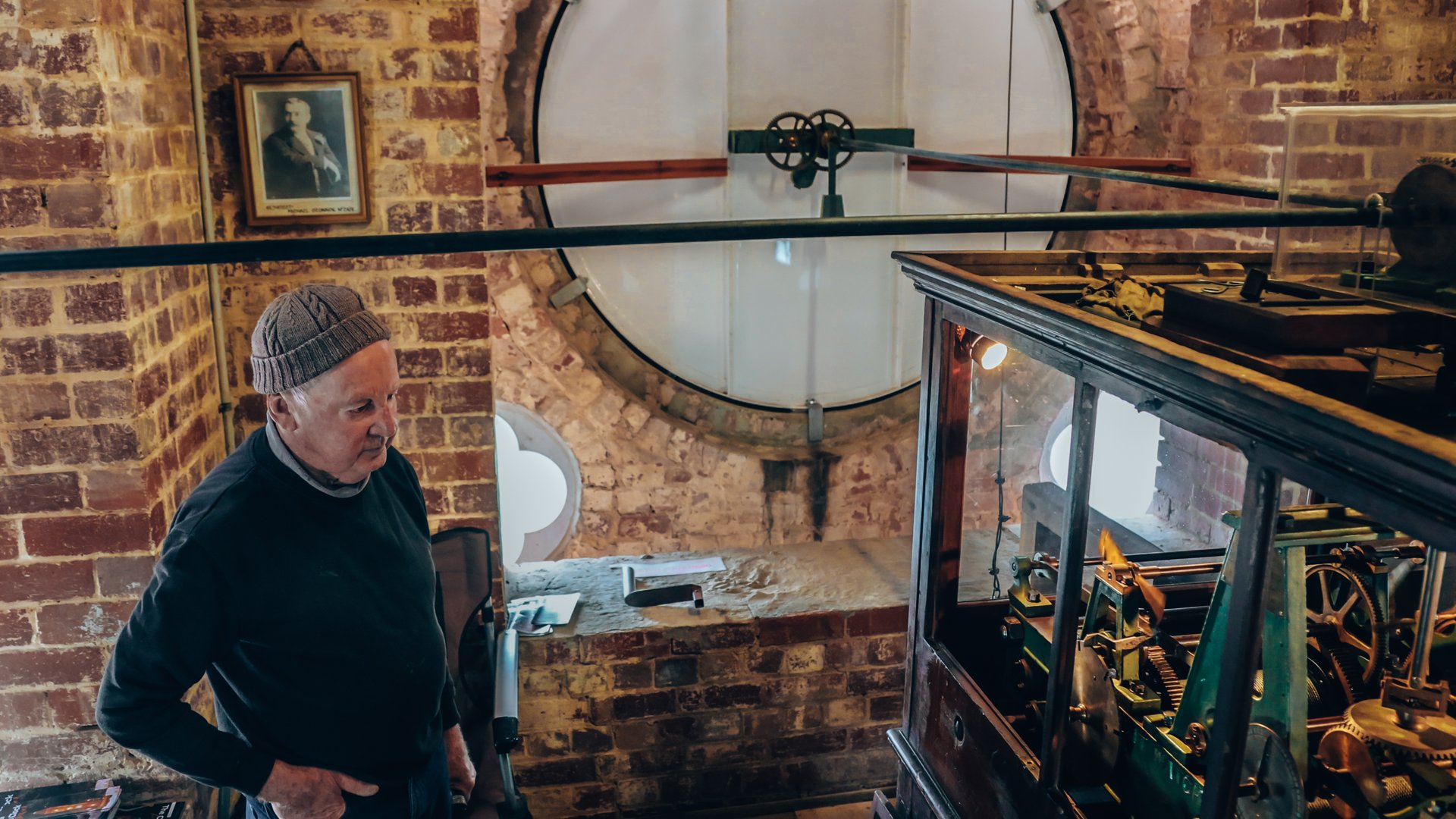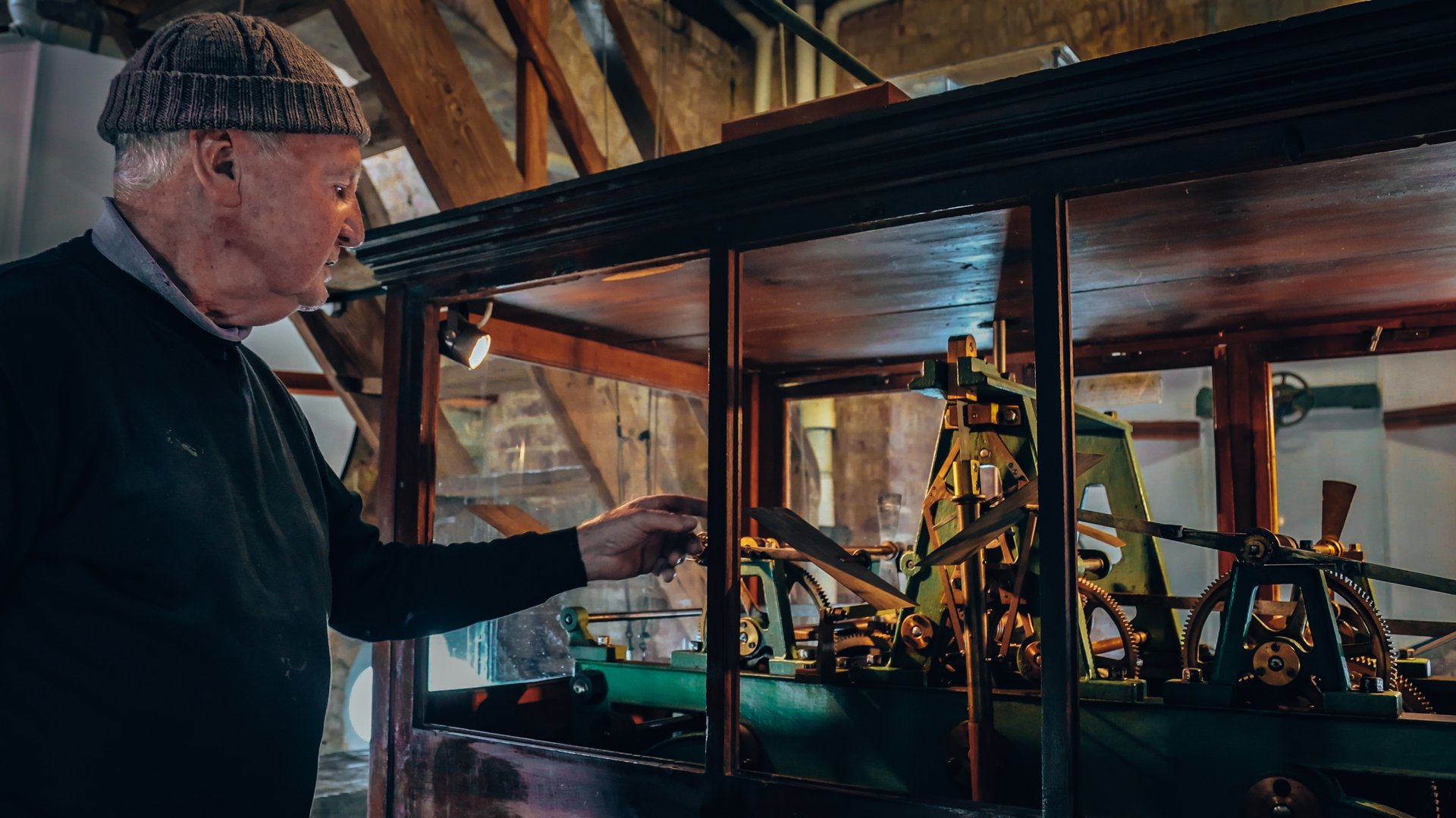The Camperdown Clock Tower
In December 1838, John, Peter and Thomas Manifold travelled west from Geelong and discovered rich grazing land and a freshwater lake – Lake Purrumbete.
They settled beside the lake in January 1839. Other settlers soon followed and in 1852 the town of Camperdown was established a few kilometres west of Lake Purrumbete.
The unique Gothic style Clock Tower that stands in the centre of the town was built in memory of John Manifold’s third son, Thomas Peter Manifold, who was killed in a hunting accident in 1895.
On 8th January 1896, a letter from the executors of Mr Manifold’s estate was received at a meeting of the Hampden Shire Council. The letter informed the Council that a sum of £1,000 had been bequeathed by Mr Manifold for the purpose of erecting a Clock Tower in Camperdown.
Local architect, Michael McCabe, was appointed to prepare the design which was approved by the Council and the Manifold executers late in 1896. The builder was Peter Rodger, Builder & Contractor of Williamstown, who completed the work in 1897. Other notable buildings by the architect are the Queenscliff and Elsternwick Post Offices as well as the Prahan Court House and Melbourne City Court.
The Clock Tower sits on a very solid rock barrier, then mounted on a bluestone base. During the construction, the bricks and mortar were raised to work levels through the use of a hod which was raised by a block and tackle using a pony as power. All day long the pony plodded up and down the avenue, covering short distances at first. When the tower was nearing completion, his journey took him to opposite the Mechanics Institute building near Bath Street. The bricks were lais at a rate of approximately (3 m.) per week with the bricks being brought from Melbourne by rail.
The 35.5m high tower was formally handed over to the Council on 7th July 1897. The cost of building the tower was £983 with the mechanism a further £438 which the Manifolds, in their generosity, paid in full (a total of £1400).
During the first 10 years of its operation, the clock chimed every quarter hour for 24 hours. However, visitors who stayed at the nearby Leura Hotel complained of sleepless nights caused by the bells. An automatic device was installed in 1907 to silence the chimes between 11.00pm and 7.00am, but the striking of the bells on the hour continues.

The clock mechanism is a fine example of a flatbed turret clock. It was made for T. Gaunt & Co of Melbourne by German born clockmaker Fritz Ziegler. It was the 39th of some 80 clocks built by Ziegler at his workshop at 148 Little Colling Street, Melbourne.
The three bells were cast especially for T. Gaunt & Co by Mears and Stainbank of London. Silver was added to the casting mixture, giving richness to the tone of the bells. The hour bell weighs 410 kg.
There are three gear trains within the flat bed frame, each driven by separate weights: Quarter hour weights – 12 x 9 kg (108 kg). The weights descend in a well beneath the bed to ground level about 18 m below. Re-winding is by hand once a week and the clock will run for approximately 8 days when fully wound.
The two end gear trains operate the quarter chime and hour strike respectively. The quarter chimes are sounded on a two peal bell. They sound once at quarter past, twice at half past, three times at quarter to and four times on the hour. Each hour is counted out on the hour, following the quarter chimes, on a separate, larger hour bell.
The centre train is the going (time keeping) train. It is regulated by a a35 kg pendulum, through a double three-legged gravity escapement. This type of escapement was invented by Lord Grimthorpe and was developed in 1840 especially for the famous Westminster Clock (‘Big Ben”) in London, which was the first clock to have such an escapement.
The drive from the train is taken vertically from the movement to a four-way crown wheel assembly located above the main mechanism. Four drive shafts each transmit movement to one of the dial movements., which consists of a 12:1 motion train transmitting motions through the dial to the hands.
The clock faces are 1.83m in diameter and the figures on the clock faces are 0.33 m in length. The hands are made of 3mm sheet copper with a copper tube full length, all soldered together on to a bronze centre. The hour hand is 63.5 cm and the minute hand is 93.98 cm. Each hand weighs 1.6 kg.
